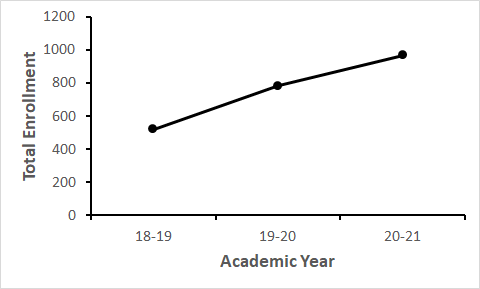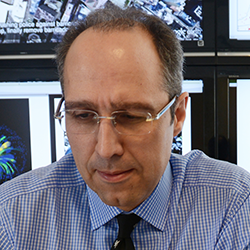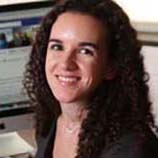Interests Converge as Data Science Program Grows
Background: Data science is a scholarly area whose mission is to advance our ability to extract valuable knowledge and insight from large and diverse datasets. As such, it builds upon the intersection of computer science, statistics, mathematics, information science and the application domains in which these datasets are used. So, while its foundation is within STEM, data science often grows by taking advantage of its footprint not only within the natural, computational, and physical sciences, but also humanities, social sciences, business, and even law. In the process, these disciplines grow through new data-derived insights. At W&M, data science activities have been expanding in many parts of the university. Now, Arts & Sciences faculty are coming together to build a new academic unit that will help these activities become more robust, support the development and administration of student offerings, and foster even more cross-disciplinary research activities.
It started with students approaching faculty members to create self-designed majors around the use of data.
“Our first undergraduate approached me back in 2017 asking about a self-designed major, where she wanted to focus on the intersection between data analytics (specifically, Global Information Systems, GIS) and, to my surprise and consternation, dance. Dance!” said Professor Dan Runfola (Applied Science). “Here was a student truly taking the 'communication' aspect of Data Science to heart – pushing boundaries, simply because she had no idea these boundaries existed in the first place.”
“Students were asking for our help building pieces of data science into self-designed majors that integrated their academic interests,” said Professor Matthias Leu (Biology), current director of the Data Science program. “A core group of faculty started talking about how we might design a formal academic program, and the excitement just keeps building.”
To date, the faculty have designed and garnered formal approval from the Commonwealth of Virginia for a data science minor and a major leading to a B.S. degree. Next up: creating a discrete academic unit embedded with the Department of Computer Science. After that, focus will be on designing a second major leading to a B.A. degree.
Student enrollments continue to rise, and the Commonwealth of Virginia is committed to data science at W&M. This year Arts & Sciences plans to hire up to five new faculty members to meet demand and create a center of scholarly excellence. Training undergraduate students is a Commonwealth priority, and Virginia has provided funding for faculty in data science, including monies focused on recruitment of faculty from backgrounds underrepresented in the field. This support is in addition to Tech Talent funds for state universities to build cohorts of students graduating with sophisticated technical skills (see related story).

 The Data Science program, initially led by Assistant Professor Dan Runfola, has benefited from the strong leadership of Associate Professor Matthias Leu and will now be led by world-renowned data scientist and incoming director Anthony Stefanidis, Professor of Computer Science, and incoming associate director Jaime Settle, Wakefield Term Distinguished Associate Professor of Government. Stefanidis joined W&M in 2020 after having chaired a large and active department and creating a research center with more than $40 million of federal and private funding at George Mason University. Settle is a remarkable researcher, investigating social networks and codirecting a social science research methods center.
The Data Science program, initially led by Assistant Professor Dan Runfola, has benefited from the strong leadership of Associate Professor Matthias Leu and will now be led by world-renowned data scientist and incoming director Anthony Stefanidis, Professor of Computer Science, and incoming associate director Jaime Settle, Wakefield Term Distinguished Associate Professor of Government. Stefanidis joined W&M in 2020 after having chaired a large and active department and creating a research center with more than $40 million of federal and private funding at George Mason University. Settle is a remarkable researcher, investigating social networks and codirecting a social science research methods center.
Stefanidis notes, “What an exciting time we find ourselves in regarding data science in A&S. We have remarkably talented faculty across our disciplines and such strong student interest. It will be such a pleasure to collaborate with so many colleagues across A&S, to strengthen data science and build its future in W&M in a way true to our history and identity.” Similarly, Settle observes, “There is such passion among the faculty for what data science can teach students about ways of thinking about problems and seeking answers.”
“We are excited to build and innovate our Data Science program as a strong and integral presence in the A&S academic community,” said Maria Donoghue Velleca, dean of Arts & Sciences. “The focus on data literacy, critical thinking, problem-solving, and communication aligns so well with the philosophy of a liberal arts education. We are especially grateful for the incoming leadership of Professors Stefanidis and Settle.”
The Data Science program takes a highly interdisciplinary approach. Program faculty have a range of knowledge and backgrounds, encompassing digital humanities, geology, health sciences, geospatial analysis, ethics, government, computer science, and Chinese (to name a few). Related affiliate research labs are located across the campus. A new structure places Data Science as an autonomous unit of the Department of Computer Science.
 “We make the program accessible to first-year students, getting them up to speed with the shared programming tools and analytical skills,” said Settle. “Along the way, students can pursue what they love across the liberal arts curriculum, and integrate data science as a smart decision career-wise and incredibly useful in informing their other academic courses.”
“We make the program accessible to first-year students, getting them up to speed with the shared programming tools and analytical skills,” said Settle. “Along the way, students can pursue what they love across the liberal arts curriculum, and integrate data science as a smart decision career-wise and incredibly useful in informing their other academic courses.”
“In my conversations with students they repeatedly mention three things that excite them about the Data Science program,” said Leu. “First, they can obtain a degree that prepares them for well-paid employment without attending graduate school. Second, they like the focus on real-world applications in our courses. And third, our interdisciplinary approach in teaching and research allows them to specialize in areas of their choice.”
Stefanidis points out that the goal of the W&M Data Science program is to assemble a strong group of faculty scholars who are doing original research in the field, and to support their collaborative activities with W&M faculty and students across disciplines. “Data Science will be taking advantage of the liberal arts approach that characterizes our university, to operate and grow at the intersection of diverse academic disciplines, supporting and supported by them. The unique character of W&M will shape the kind of scholarship our faculty will undertake, to develop a program that will be nationally recognized and train future leaders in the field.”
The collaboration and brainstorming among faculty has generated some additional benefits, according to Settle: “My own starting point is computational social science work. In my research and teaching I’m increasingly interested in ethical aspects: How is my course content nestled into the larger field and context? How can I help students begin to think this through?”
“The promise of interdisciplinarity is integral to the field of data science,” noted Donoghue Velleca. “We’re looking forward to welcoming new faculty and adding their excitement to our talented mix.”














